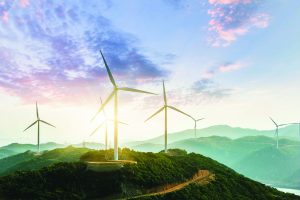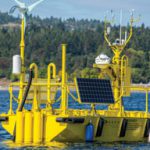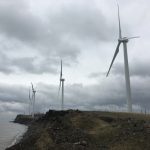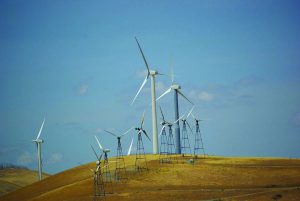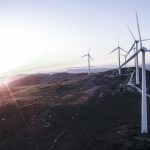Offshore wind development in the United States has seen a remarkable surge in recent years, signaling a large shift in the nation’s renewable energy landscape. While the U.S. was initially slow to adopt offshore wind, there has been a notable acceleration driven by ambitious government targets and increasing investor interest. The White House’s commitment to deploying 30 GW of offshore wind by 2030 underscores the significant potential of this renewable energy source. With several projects now in the pipeline, the U.S. offshore wind sector is poised for exponential growth.

Offshore wind in the U.S. — a rapidly growing market
At the start of 2023, the country had only two small offshore wind projects operational, with a total capacity of just 41 MW. However, this figure is set to skyrocket as commercial-scale projects off New York and Massachusetts come online, with capacity expected to reach almost 1,000 MW by this year, according to Reuters. Despite facing unique planning, siting, and permitting challenges, interest in offshore wind energy persists in coastal areas across the U.S.
Proximity to population centers, the potential for local economic development benefits, and the abundance of superior wind resources makes offshore wind an attractive option for meeting renewable energy targets. However, experience gained in increasingly congested European waters shows that, to meet targets and keep up with rapid growth, developers need a huge amount of processing power to accelerate the early stages of wind project development.
The essential toolkit for offshore wind development
Successful offshore wind-project development relies heavily on a comprehensive toolkit that includes advanced, fast simulation capabilities, Geographic Information System (GIS) data integration, and time series analysis. These tools play a crucial role in streamlining project planning, optimizing layout designs, and mitigating risks associated with wake effects and other environmental factors.

Most developers need to run more than 100 simulations to optimize the layouts of new wind farms. Depending on the size of the project, each simulation can last more than half an hour, slowing down this phase of early-stage development drastically. It is clear that developers require more processing power to expedite this stage. At Youwind, for example, its software tackles this problem, enabling simulations for wind farms as large as 3.5 GW (and accounting for neighboring wind farms) to be completed within a few minutes — 10 times faster than existing solutions.
Incorporating GIS data integration further enhances developers’ capabilities, providing valuable spatial information for precise project planning. Integrating substrate data, bathymetry slope data, and foundation technology filtering is key to foundation placement and cable routing, reducing installation costs and improving project efficiency. A clear overview of the wind density of the site is likewise crucial at the earliest stages.
Additionally, time series analysis allows developers to collect and analyze wind-resource data for bankable analysis, providing a higher level of granularity and enabling more accurate yield calculation for any wind farm, as well as study seasonality effects, among others. Proper software applications can offer a suite of advanced tools that can give developers everything they need to successfully navigate the complexities of offshore wind-project development, optimize project layouts, and maximize renewable-energy production.

Subsea cables — addressing the most common cause of failure
Subsea cable failures are a particular point of concern in the early stages of project development, as they have a substantial impact on project viability and revenue streams. With subsea cables accounting for approximately 85 percent of total offshore wind insurance claims, according to Global Underwater Hub (GUH), the industry faces significant challenges in mitigating these risks to ensure the sustainable growth of offshore wind energy. The mean time to repair (MTTR) for array and export cables, ranging between 50 and 60 days, underscores the urgency of addressing cable failure concerns, especially during periods of high wind speeds and electricity prices.
As wind farms expand and move farther offshore, the length of subsea cables and, therefore, the associated risk factors have increased, too, highlighting the need for robust cable visualization tools to anticipate and address potential challenges.
Developers must equip themselves with advanced tools to generate detailed wind-farm layouts rapidly, accounting for site-specific bathymetry and geography, to effectively manage cable-related risks. Software is available that offers cable visualization allows developers the ability to swiftly generate optimized inter-array and export cable layouts, ensuring efficient project planning and risk mitigation.
By simulating the impact of cable failures on future maintenance budgets and incorporating redundancy measures into wind-farm designs, developers can enhance project resilience and minimize potential disruptions. With cable visualization tools at their disposal, developers can navigate the complexities of offshore wind development in the U.S., driving the industry further in its pivotal next year.

Learning from global markets
The U.S. offshore wind industry stands to gain valuable insights from the global market’s experiences, particularly from hard-won lessons learned in Europe. With a capacity of more than 30 GW, Europe is a leader in global wind, and the lessons it has learned emphasize the importance of full consideration for every element of the wind farm from the early stages of the planning process.
This approach leads to a deeper understanding and more effective management of the development and operational phases.
By prioritizing robust analysis capabilities early on and taking into account the wind farm’s entire lifecycle and its interactions with neighboring farms, developers can foster early engagement with supply chains, mitigate the need for late design changes, and proactively manage change with anticipated impacts already mapped out. Drawing from the global market’s experiences — and distilling these into a readily accessible IT toolkit — can steer the U.S. market on the right trajectory as it continues to expand its offshore wind capacity.
Conclusion
The journey toward harnessing the vast potential of offshore wind energy in the United States presents a wealth of opportunities and challenges. With ambitious government targets and increasing investor interest, the U.S. offshore wind industry is poised for exponential growth, driven by the proximity of wind resources to population centers and the potential for local economic development.
However, to capitalize on these opportunities and ensure the successful development of offshore wind projects, developers must equip themselves with the necessary tools and expertise.
As the industry grows, so will the needs of developers. With demand rapidly growing, advanced simulation capabilities, GIS data integration, and enhanced processing power are requirements for successful offshore wind development. Leveraging these innovative technologies allows developers to navigate the complexities of project development more effectively, mitigating key risks sooner rather than later, and realizing the full potential of offshore wind energy in the United States.


















